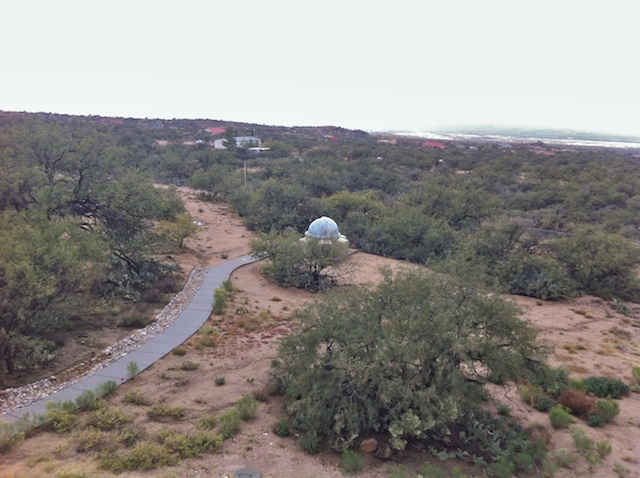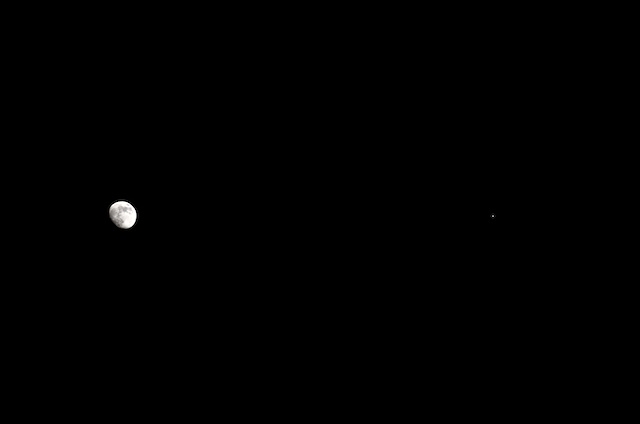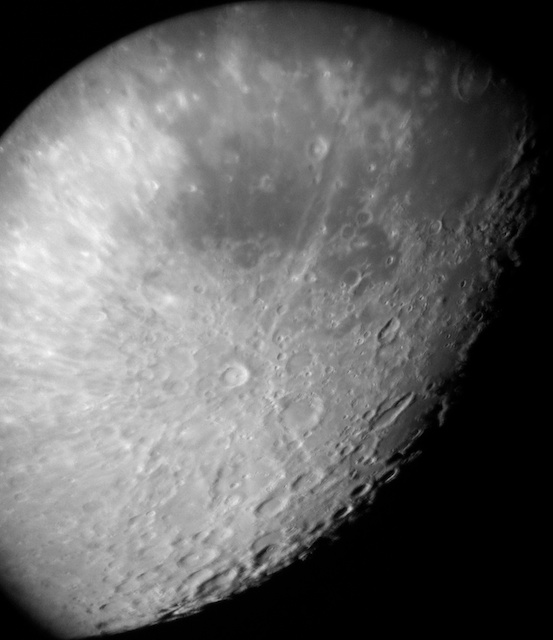
PST Mod, Sky and Telescope, Weather, iPhone Imaging
Posted: 7 December 2011
Thursday, 1 December, was very windy and cloudy. I took advantage of the downtime and went out to the observatory. I wanted to see if I could make the PST modification mentioned here: http://www.digitalsky.org.uk/PST/PST-mod.html. It looked simple enough and would allow my DSLR to properly focus when mounted at prime focus of the PST. However, the photos in the article don't describe HOW to remove the eyepiece holder and blocking filter section and the extension piece. They appear to be threaded in a photo but I could not loosen mine. I suspect they are glued for security and I didn't want to break them. There is no contact info in the article. If anyone knows how to remove these pieces, drop me a note. Thanks.
The same day I started reading the January 2012 issue of Sky and Telescope magazine. When I got to the "75, 50 & 25 Years Ago" column, I realized that I have been a continuous subscriber for 50 years! My brother Paul gave me my first annual subscription as a birthday present in 1962. I still have all the issues from the past 50 years proudly displayed on a bookshelf. Here is my first issue (January 1962, right) next to the January 2012 issue (left):

On Friday, 2 December, I was on the house roof (dealing with a couple of minor leaks from Thursday night's rain). While I was up there, I took this photo of Cassiopeia Observatory on a cloudy day:

Had rain, and even snow, over the weekend. I have some time-lapse videos availalble for those who enjoy such things. Saturday night after about 2.5" of snow had fallen, the sky briefly cleared up. I took this photo of the moonlit snow and the constellation of Orion rising in the southeast:

The skies finally cleared on Tuesday, 6 December. During the daytime, I went to the observatory and removed the snow that was still on the SkyShed POD dome. Opened the observatory at 1809 MST, temperature 38°F, for observing. At 1816 MST, took a quick look at Venus, 77X, low and in a tree. Then over to Jupiter, first at 77X and then at 206X. Seeing was really bad. Even 133X was too much magnification for this evening. Went back to 77X and could just barely see the Great Red Spot near the central meridian.
At 1830 MST, went to the moon, 77X. Then toured the terminator at 206X. The moon was really moving around in the FOV. Starting at 1835 MST, I took a series of photos of the moon-Jupiter conjunction with the D7000 DSLR. This is a f/5.6, 1/1000sec, 122mm, ISO 500, exposure:

My iPod, that was playing some "Hearts of Space" music, shutdown automatically due to the low temperature (35°F).
At 1842 MST, I began setting up for iPhone afocal imaging of the moon through the 8" LX200-ACF using the MX-1 afocal adapter. Per a tip on the 9to5Mac web site, I used my iPhone earbuds as a camera remote shutter release with the Apple Camera app. As the article says, this works and allows you to take photos AND start and stop video recordings with the iOS Camera app. This is very useful when the iPhone is attached to the telescope. I use a wireless remote on my D7000 DSLR and now I have a remote for the iPhone. This is a 77X afocal image:

And this is a cropped 154X image:

At 1903 MST, the temperature was 34°F and the hot chocalate was welcome! Next, it was to Jupiter for some test video recording using the FiLMiC Pro app on the iPhone 4. FiLMiC Pro allows locking of both focus and exposure, which makes it an excellent app for doing astro video recording. Unfortunately, it does not recognize the earbuds remote for starting/stopping recording. I have suggested that to the developer for a future update and hopefully, they will add it. I attempted a video recording of Jupiter, 444X + Moon Filter, but seeing was still very bad. Focusing was difficult and Jupiter was moving around quite a bit on the iPhone screen during the recording. The resulting video was unusable for stacking.
At 1928 MST, I returned to the moon and took a quick look at 77X. Seeing continued to be very bad, so I decided to close up for the night.
Closed the observatory at 1937 MST, 33°F.
A handy new free iOS app called "Sky Time" has been released. The developer told me he has also released a Windows Phone 7 version, for those few of you who are using Windows phones. The image below shows the useful information displayed by the app:

In other news, the JMI Microfocuser has shipped from OPT. I will be posting a review soon.
Go to the previous report.
Return to the Cassiopeia Observatory Welcome Page.